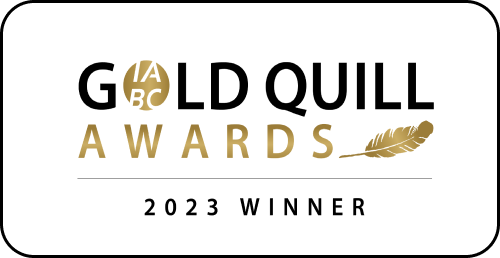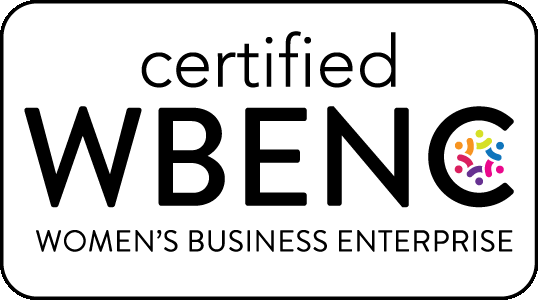Members of “Gen Z” (those born between the late 1990s and early 2010s) are fully wired digital natives who expect communication in their personal lives to be concise, visually appealing, and mobile-friendly. But what about workplace communication? Do those same preferences hold true, and how do members of Gen Z feel about the communications they receive from managers and leaders in their organizations?
To find out, we spoke with two members of Gen Z who recently entered the workforce. Kelly O. is a 25-year-old creative marketing specialist at a corporate wellness provider. Mike D., also 25, is an executive assistant for an association that provides leadership development and educational program support to colleges and universities.
How do you prefer to receive job-related information (company policies, pay, performance, benefits, company direction)? Does it depend on the topic?
Both Kelly and Mike agree that while digital communication is convenient for most workplace topics, they appreciate face-to-face or Zoom calls to introduce new and important information. Mike prefers to learn about something new face-to-face or via Zoom first, then receive a written follow-up that he can reference at any time.
When it comes to benefits, Kelly says hearing information from HR experts in meetings versus just reading about them helps her better understand complex topics like health care coverage and 401(k) plans.
Mike says with all the changes in the workplace since COVID-19, it’s vital to have an updated employee handbook. He feels policies like remote work, vacation, sick leave, and benefits need to have a “single source of truth,” so everyone is on the same page, including leadership.
What workplace communication tools have proven most effective for you? And, given new instant messaging tools, how do you set boundaries so you’re not always responding to messages?
Both Kelly and Mike’s organizations use instant messaging tools (e.g., Slack; Microsoft Teams) for light conversation, quick questions, and non-urgent updates. They appreciate the casual nature of conversation on this platform, which is similar to texting. It also enables them to stay connected no matter where they’re working—remotely, in the office, or while traveling. For important updates and to share documents, they still prefer email.
Mike is careful to mute Slack notifications on the weekend or after hours and keeps his “Outlook app safely un-integrated” from his personal email. Kelly set boundaries with clients and coworkers early on, noting a 24-hour response time.
In the beginning of the pandemic Kelly found it hard to juggle all the many ways of communicating—her phone, Microsoft Teams, Outlook—so she started to close email for a few hours and set her status to “do not disturb” on Teams. As a remote worker, she notes that she also needed to set boundaries with friends and family. “Just because I was home didn’t mean I was available!”
What do you think the older generations (Boomers, Gen-Xers) you communicate with at work could do better/differently?
Mike would love it if Boomers and Gen-Xers could cut down on the number of meetings they organize. According to Mike, these meetings “interrupt focused work time and usually accomplish very little. Most of the time the information could have easily been sent in an email. And meetings are usually followed by email summaries to all who participated, so why not just have the whole interaction over e-mail?”
Kelly feels that members of these two generations have a harder time maintaining work-life boundaries than younger generations. She says she’s never had a younger co-worker reach out on weekends or holidays, but she has received after-hours, weekend, and holiday communications from older co-workers.
Is video an effective way for executives to communicate? Why or why not?
Mike draws a distinction between how executives communicate via Zoom to share information in lieu of a face-to-face meeting. He appreciates the convenience of live Zoom meetings, and notes that they still feel personal. However, he feels that pre-recorded executive videos can be impersonal and contrived. He would much rather read about new company policies or direction versus listening to a pre-recorded executive video.
Kelly echoes a similar sentiment. For her, important company decisions are best communicated directly by her supervisor so that if she has questions, she can ask them right away. She doesn’t necessarily listen to a whole video to find out something important; she typically skips the intro and ending to cut to the chase. She also cautions that anything longer than three minutes is simply too long if you want to connect with a Gen Z audience.
When it comes to communication about benefits, what do you want/need to know?
Fortunately for both Kelly and Mike, they are still covered by their parents’ health insurance plans. But, as their time on those policies winds down, they are concerned about understanding what benefits are available to them and how they will enroll.
Mike wants to know: “What does it cost? What does it cover? What does it not cover? And are there options?” Kelly wants communication that is simple and free of jargon. Her HR department holds targeted information sessions for employees who are transitioning off their parents’ benefits, which she finds extremely helpful. During those calls, which are similar to professors’ office hours, she can ask all her questions and hear the HR representative explain unfamiliar terms like coinsurance and deductibles to the group.
What are your thoughts on how younger generations feel about well-being benefits?
Kelly, who works for a well-being company, says her peers are most definitely looking to work for organizations that provide mental health benefits, support for work-life balance, and tools to prevent burnout. She notes that her generation is not afraid to “job hop” to find the work culture and benefits that are important to them. She appreciates the tone set by her manager’s mantra, “We work to live, we don’t live to work,” which makes it easy to take full advantage of PTO and benefits without feeling guilty.
While not directly related to communication, we’re curious about your impression of and experiences with company culture thus far.
Both Mike and Kelly have strong opinions about company culture and what it means to them.
Kelly, who joined the workforce in 2020, says she doesn’t have a real sense of what office culture was like prior to the pandemic. She often hears about a workplace being “like a family,” but has not experienced that firsthand since her company is mostly remote.
Mike believes that company culture needs to be driven by clear, firm policies that are modeled by senior management. For example, his previous workplace offered unlimited paid time off, but no one ever felt comfortable taking it due to the “unrelenting workload” and “ire we would draw from our bosses if were absent for long.” He also notes that while his current company has a hybrid work schedule requiring staff to be in the office three days a week, senior management works remotely most of the time. This leads many employees to follow suit and rarely come into the office.
Kelly feels lucky that her company culture recognizes the need for flexibility in employees’ lives. That flexibility extends not only to where employees work—they can be remote or in-office—but also to the hours they keep. Company policy states that they can take up to four hours off without tapping into PTO, provided their work is getting done. They also have designated random “WOOHOO” days where they “work only on hours of obligation.” On these days, while staff must take client calls/meetings and adhere to project deadlines, they are otherwise free to take time for themselves. “It’s policies like these that help people have a life outside of work,” she notes.
[Note: For more on Gen Z’s desire for flexibility and individuality, read this article.]
What advice would you give to someone coming out of college into their first “real job” about how to navigate this new world of work?
Mike notes it’s important to find a mentor at your company. “Having a ’safe’ ally, someone senior to you who has been around for a while and can tell you about the nuances of company culture, history, and politics is immensely beneficial,” he says. “They can help you integrate into the company and carve a niche for yourself.” He feels there is tremendous value in having someone who will steer you in the right direction, go to bat for you, and help you in any way they can.
Kelly noted that it takes a while to learn the jargon and find a balance between being overly casual and too stiff. She recalled a time when a kind boss told her to read through her emails before sending and delete at least a couple of exclamation points.
Kelly also advises new employees to keep work-life balance front and center and clearly communicate boundaries (for example, when they will respond to emails, texts, etc.). She also cautions new hires not to put too much pressure on themselves to know what they don’t know. “A good company will train you and provide you with the guidance and support to help you grow,” she explains.
* * * * * * * * * * * * * *
Well, there you have it—insight from two Gen Z employees about how they like to receive communication and their candid thoughts on organizational culture and work-life balance.
We were surprised to learn that some “old-school” communication methods—like print, email, and staff handbooks—are still important components of employee communication. We were also struck, but not surprised, by the extent to which maintaining boundaries around work and personal lives was a priority for both of our interviewees. This generation may finally nudge workplaces in the direction of better work and life integration for all, and for that we can be thankful!
If you’d like help communicating to the newest generation in the workforce, contact us today.


